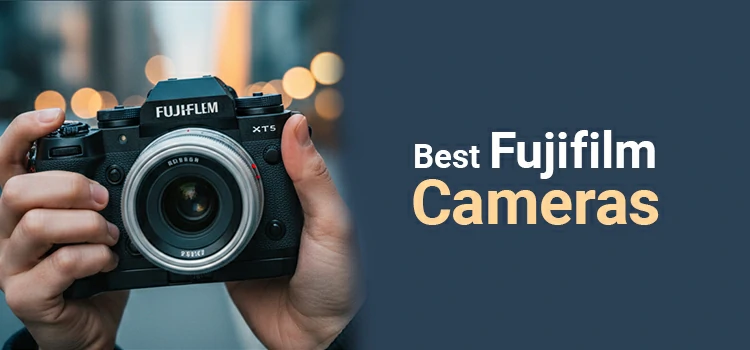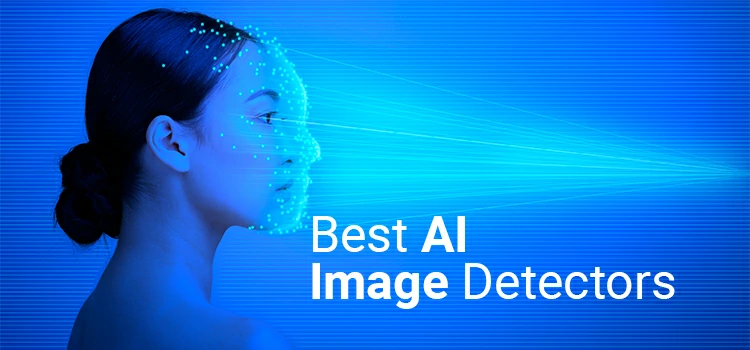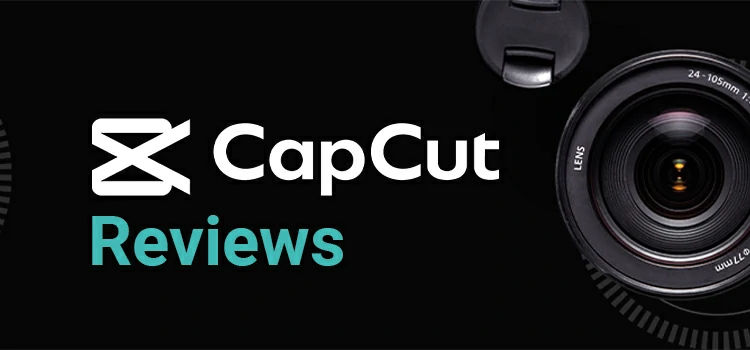The Rise of Artificial Intelligence Tools in Design: How Designers Are Using AI to Work Smarter
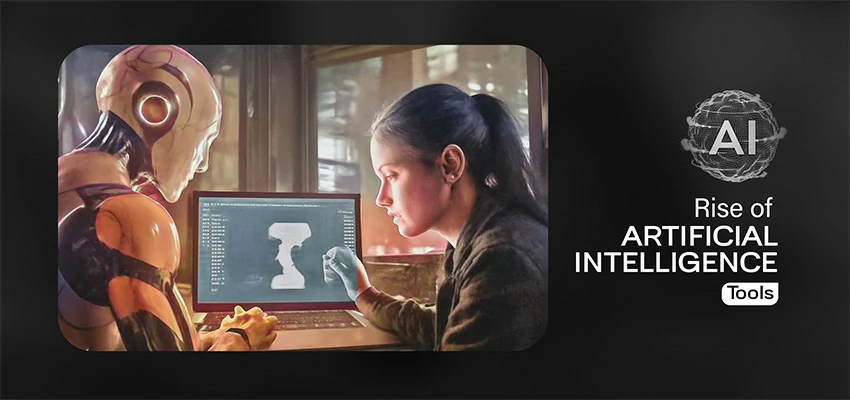
The rise of artificial intelligence tools in design has a significant impact on the creative industries, like design. It has changed the design process, broadened design patterns, enhanced design concepts, styles, and created a positive vibe among the designers. We have got a clear message that the future of design is AI-centric, with various AI applications serving different purposes to weave the design world.
Designers from every sector should pay close attention to everything related to design. Otherwise, surviving only based on self-creativity and thought process will leave you behind the competitors. The best AI tools will speed up your design work, help you craft trendy designs. Avoiding AI adoption can lead you to disaster.
The use of artificial intelligence has made the design process smarter and easier than before. So, designers should receive AI as a helping tool, not as a threat.
AI will not replace humans, but those who use AI will replace those who don’t”- Ginni Rometty, Former CEO of IBM.
The Evolution of Artificial Intelligence Tools in Design
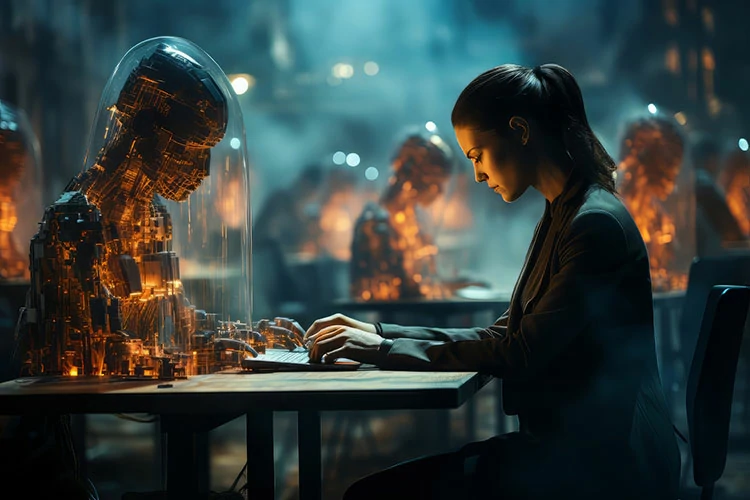
AI evolution has transformed the creative industry and is growing rapidly. Adoption is increasing, and its market value is projected to reach $26.5 billion by 2033.
AI has made the design processes faster, smarter, and more attractive than ever before. Initially, the use of AI-powered design tools was limited to basic automation. In that time, AI did basic resizing of photographs, suggested color grades, keeping design steps records like creating Lightroom presets, Photoshop actions, etc.
But the advanced artificial intelligence app has now become a helping force in all types of design sectors, at the level of thinking and execution.
Designers can create high-quality visual content, generate ideas, and create layouts utilizing different online and offline AI tools like Adobe generative AI, Midjourney, and DALL-E. They use text prompts, describe the needs, and AI generates the graphics, reducing time.
How do AI tools work? Its machine learning algorithms analyze brand guidelines, trends, user behaviors, and suggest real-time designs.
Different design sectors, including UI/UX, have benefited from utilizing AI tools having user flow prediction and testing for better audience engagement. AI tools are now working as co-creators and improving human creativity, making the human replacement allegation false.
Designers are now not mere designers, but rather creative directors. They teach and guide AI with illustrative prompts for meaningful outcomes. AI integration has enabled users who have no formal design training, but creative imaginations and aesthetic knowledge, to create outstanding graphics.
However, AI tools are evolving continuously- new AI tools are coming and the old AI are getting improved and more powerful for professional quality work. Design lovers are going to see a paradigm shift in the creative world.
Popular AI Tools Used by Designers
Designers from multiple industries use AI design generator tools to speed up design projects. AI-powered design tools save time. These are cost-effective and lessen creative pains. They help enhance creativity, quality output, and user experience, while providing other benefits to designers.
Some of the most widely used AI tools for image generation are Midjourney, DALL·E, and Adobe Firefly. The UI/UX designers use Uizard, Galileo AI, Framer AI, and more. For image editing and enhancement, graphic designers leverage Luminar AI, Remove.bg, Adobe generative AI, and for content and brand design, we can use Looka, Jasper Art, Designs.ai, etc. Out of these examples of artificial intelligence tools, designers utilize many other automatic tools.
Midjourney
An advanced artificial intelligence, Midjourney AI, is capable of generating creative and detail-oriented graphics based on the prompts. To create highly creative visual artwork from language description, the primarily discord-based interface of Midjourney combines machine learning techniques, deep learning, and diffusion models.
Midjourney is designed to unlock the creativity of ordinary people by giving them tools to make beautiful pictures just by describing them. Our goal is to make humans more imaginative, not make imaginative machines.” — David Holz, founder & CEO of Midjourney, in a Forbes interview
Its unique artistic style and flexibility draw the attention of professional designers, artists, and content creators. It allows various settings to control image style, aspect ratio, quality, and variations.
Midjourney is popular for its ability to generate surreal and cinematic graphics. You can also use this AI, painterly outputs perfect for concept art, branding, book covers, storyboarding, etc.
DALL·E
It’s one of the most popular AI image generators developed by OpenAI. IT is empowered to create unique, realistic images and arts from text prompts. DALL-E generates futuristic, coherent, and imaginative graphics, understanding complex concepts, compositions, and styles.
DALL∙E 2 … is the most delightful thing to play with we’ve created so far. I find it to be creativity‑enhancing, helpful for many different situations, and fun in a way I haven’t felt from technology in a while.”- OpenAI CEO Sam Altman
This AI model is beneficial for creating rapid prototyping on behalf of artists and designers. Dall-e AI tool also collaborates with marketers and brand promoters, students, and creative people. In the entertainment and media industry, Dall-e helps create storyboarding and content development ideas.
Adobe Firefly
Firefly is a generative AI tool highly capable of creating high-quality graphical content intuitively. It works integrated with Adobe’s Creative Cloud apps and focuses on photo creation, text effects, patterns or textures, vector arts, and video editing. Its Generative Fill tool adds, removes, or extends content with natural results.
It’s like magic and everything just works.”- Alexandru Costin, Adobe’s VP of Generative AI and Sensei.
Adobe Firefly is a commercially safe, user-friendly AI tool that works seamlessly with other Adobe products. For ethical use, this tool has a Content Credentials feature that maintains transparency in AI-generated content.
For the best use of Firefly, designers and artists create mockups, concept art, social media content, art for branding and advertising, etc. It’s Smart content-aware option empowers the photo editors to edit and enhance images.
Uizard
Uizard is an AI-powered tool for UI/UX designers who get assistance to turn ideas into interactive apps or designs. An amateur designer can design leveraging Uizard without having advanced design skills. Those who need prototype ideas fast can utilize Uizard.
Uizard AI tool transforms hand-drawn sketches into UI mockups. It can generate web templates and components, text-to-design, editable image files, intuitive design layouts, etc.
Galileo AI
Another Google-affiliated AI design tool for the user interface designers is Galileo AI, ideal for the product designers, web developers, and team leads who need to speed up their idea-making process and reduce repetitive design tasks.
Galileo generates high-fidelity UI mockups, polished product designs, editable outputs, web page layouts, and more. It enables crafting AI-powered copywriting like Google artificial intelligence Gemini, fast wire framing, and professional-quality mockups, user testing visuals, and simple ideas into engaging designs in seconds.
Luminar AI
Luminar edits photographs for photographers and content creators. This AI-powered tool enhances images fast, even for those who don’t have the slightest technical skills. If you don’t know how to operate Photoshop or Lightroom, you will be able to utilize Luminar.
Luminar has many other associative AI tools to serve different purposes like sky replacement, skin touch-up, eye-enhancement, and more. However, this beginner-friendly, also for professionals, AI photo editing tool provides templates, portrait tools, batch photo editing, etc.
Remove.bg
The AI-powered tool Remove.bg removes image background automatically with great accuracy. Working with Canva, Remove.bg is now a go-to solution for quick image editing. This is the best tool for individual users, entrepreneurs or businesses, and photographers who need background removal.
With just one click, you can remove the background from your image or isolate subjects. It works even on complex edges like blankets, hair, or fur. Such a tool is handy for e-commerce product photos, marketing graphics, profile images, and more. Its robust AI automation process generates high-quality results perfect for professional use.
Looka
Looka is a logo and brand design platform. Its users can create pro-quality logos and brand designs. Looka is quick and affordable without needing any prior design experience.
Looka uses AI to generate logo concepts based on industry, style, colors, and icons. It also offers customization tools to refine the final design. Utilizing Looka’s Brand Kit provides business cards, social media assets, and marketing materials. As a result, it ensures consistent branding. AI-powered Looka is a user-friendly and cost-effective tool.
Jasper Art
Jasper is an AI content creation platform, and they have created an image generation AI tool called Jasper Art. Users can create high-quality and appealing visuals by just applying simple text prompts.
It works best for marketers, graphic designers, content creators, and entrepreneurs for their blog posts, ads, social media presentations, etc. The images created by Jasper Art are original and royalty-free. To use Jasper Art, you need no prior complex design skills.
Designs.ai
Another AI-powered tool is Designs.ai, which generates high-fidelity designs efficiently. It provides a logo maker, video creator, speech generator, and photo manipulation facilities. Such a multi-dimensional AI tool is beneficial for the designers, image editors, digital marketers, business entrepreneurs, and so on.
How AI Helps Designers Work Smarter
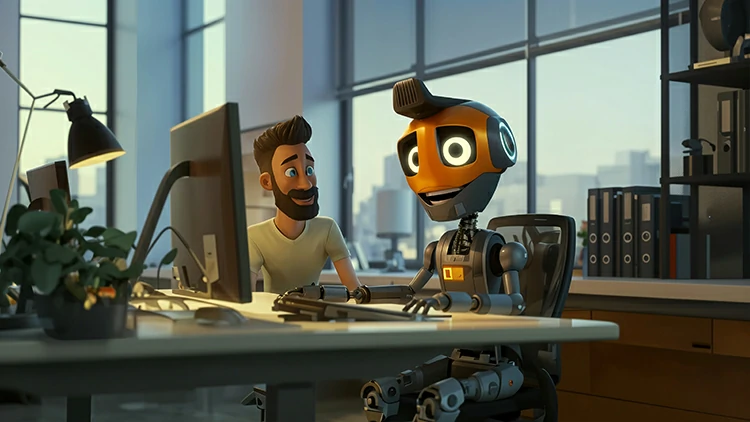
AI tools change the design landscape. Designers create fabulous designs more creatively and smartly than ever before. Minimizing repetitive tasks, AI tools speed up the design process more efficiently.
Graphic designers can resize images, remove messy backgrounds, upgrade colors, optimize layouts, and minimize time consumption. They can generate vector graphics, mockups, templates, logos, brandings, websites, and make ideas come to reality.
Designers can work more creatively than before by analyzing big datasets. AI uncovers the latest trends, suggests innovations, and new kinds of design concepts, and thus helps the designers to work smarter. They get time to solve big problems rather than do manual tasks.
Furthermore, AI enables designers to create data-driven designs. It analyzes user behavior and creates more personalized and user-centric interfaces and prototypes. However, AI is an indispensable collaborator and asset for modern designers.
The Designer’s Role in the AI Era
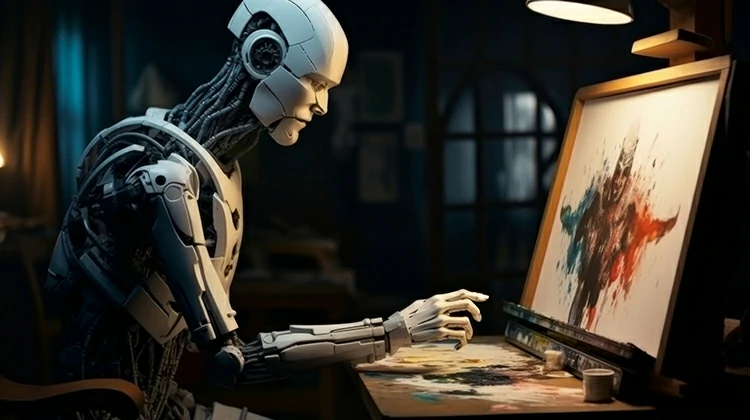
In the AI era, still, creativity and critical thinking matter. Designers are the crucial bridge between human experience and technology. They must evolve beyond aesthetics and usability. Making AI tools accessible to all, ethical, and aligned with human values, designers will take responsibility for shaping users’ interactions with the AI systems.
AI tool is a bit of a threat to the mediocre designers who need to upgrade themselves with the fast pace of technological transformation. With the existing experience, designers in all spheres must know the design principles, data, algorithms, and all AI-driven decisions.
Designers have to work with empathy and foresight, crafting interfaces and industry experiences for building trust and meaningful engagement to face the challenge of AI’s automatic tasks and influence users’ behavior.
Challenges and Ethical Concerns
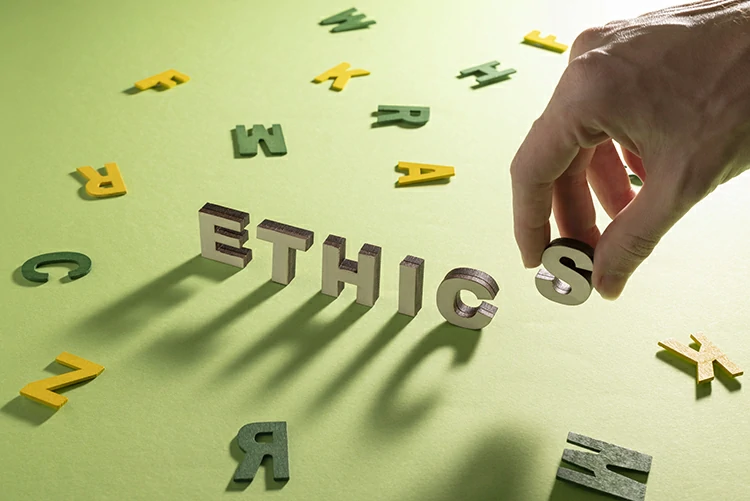
AI-powered tools have brought new opportunities, it’s true, but at the same time, they present several challenges and ethical concerns regarding the design industries. Copyright and originality are at risk since it is not so far possible to trace out the content ownership. Most often, some tools just replicate designs.
Additionally, over-reliance on automation or AI tools may ruin human creativity and critical thinking. Because of so many AI-generated designs and images, it becomes harder to earn authenticity and users’ trust.
Sometimes, AI tools can generate biased content, like designs. They may reflect prejudices from their training data or unfair/misleading results.
Tips to Use AI without Losing Your Creative Edge
If you want to leverage the power of AI, you need not necessarily compromise your creative edge. Do not rely on AI generator tools solely while doing big projects; rather, integrate them into small, manageable tasks.
Use AI assistant tools for brainstorming or idea generation. Professionals should not depend on AI for final output, but rather believe in their designs or content’s originality. Reflect on your creative identity and maintain a distinct design voice and style.
Furthermore, always try to stay informed about the latest AI tools inventions, industry trends, and news. It will keep you on creative intuition.
The Future of AI in Design

In the creative design world, AI-powered tools have brought about a transformative shift. Artificial Intelligence will become more sophisticated. They will automate repetitive tasks, create design variations, and provide fruitful suggestions. AI will perform all these tasks based on user behaviors and preferences.
As a result design process will get accelerated and enhanced creativity and productivity. AI will help designers more to explore possibilities with less effort. These modern tools will reshape the innovation boundaries, making designs more adaptive, data-driven, and accessible.
AI tools have some negative issues. Along with the great collaborations, AI tools will take away job opportunities from the hands of beginners or mediocre designers. There is a chance, creativity may get destroyed. The tremendous use of AI will make people effortlessly and intelligently blind.
Final Thoughts
Anyway, true to say, AI will reshape the design world, not replace like entirely. They may transform the ideation process, but surely, they will not destroy the creative process of the designers. Intelligent designers will grab AI-enabled tools as an opportunity to take their innovation to the next level.
They can unlock efficiency, creative inspiration, and potentiality. Smartest designers will adapt and leverage the powerful AI tools and elevate their craftsmanship.
FAQs
What are the best AI tools for designers?
Ans: The best AI tools for designers are Adobe Firefly, Canva Magic Studio, Remove.bg, Cleanup.pictures, Runway ML, Uizard, Framer AI, Galileo AI, Midjourney, DALL-E3, Leonardo AI, Khroma, Fontjoy, FontPair, Visily, Looka, Brandmark, Designs.ai, AI Plugins and Add-ons like Photoshop Generative Fill, Figma AI Plugins, Illustrator Vector Recolor AI, Blendar AI add-ons, Ebsynth, and more.
Is AI a threat to graphic design jobs?
Ans: It is true that AI is changing the graphic design process, but not a direct threat to skilled designers or creativity. AI tools may affect the average designers who perform basic and repetitive tasks, or template-based work. Besides, they may take away low-budget clients who don’t need complex designs. Low-budget clients will complete their design jobs by utilizing these AI tools.
In this situation, there are even some design stages that need creativity and imagination, which will not be harmful by the AI. Branding and strategy making process, creative direction and taste, client collaboration will see a great transformation and change, but they still need a human touch. AI can help here to boost processes without destroying.
Can AI fully replace human creativity in design?
Ans: In fact, AI will not fully replace human creativity in design sectors. AI will transform concept concept-making process, automate repetitive tasks, offer suggestions, mimic styles, and accelerate idea idea-making process.
But, AI cannot hit original emotional expression, cultural sensitivity and nuance, strategic thinking and storytelling, human experience and taste evolution, and ethical judgement. In reality, AI works as a human collaborator, not a competitor. Designers can get help with professional output.
How can beginners use AI in their design workflow?
Ans: Beginners can use AI tools to get inspired with an AI image generator. Creating ideas and getting creative process can be more efficient and effortless. Creating instant design layouts and templates utilizing AI can be one of the strong points.
Repetitive design tasks can be automated, and creating a logo, including other brand assets, will be time-saving. To speed up UI/UX designs, AI can be fruitful. They can test their design aesthetics with AI. AI can be beneficial for beginners when they think about creative blogs, ad copy, or page content using tools like ChatGPT.
However, all these things can go great if the beginners can leverage the prompts. So, beginners should learn AI prompt engineering as perfectly as possible.


